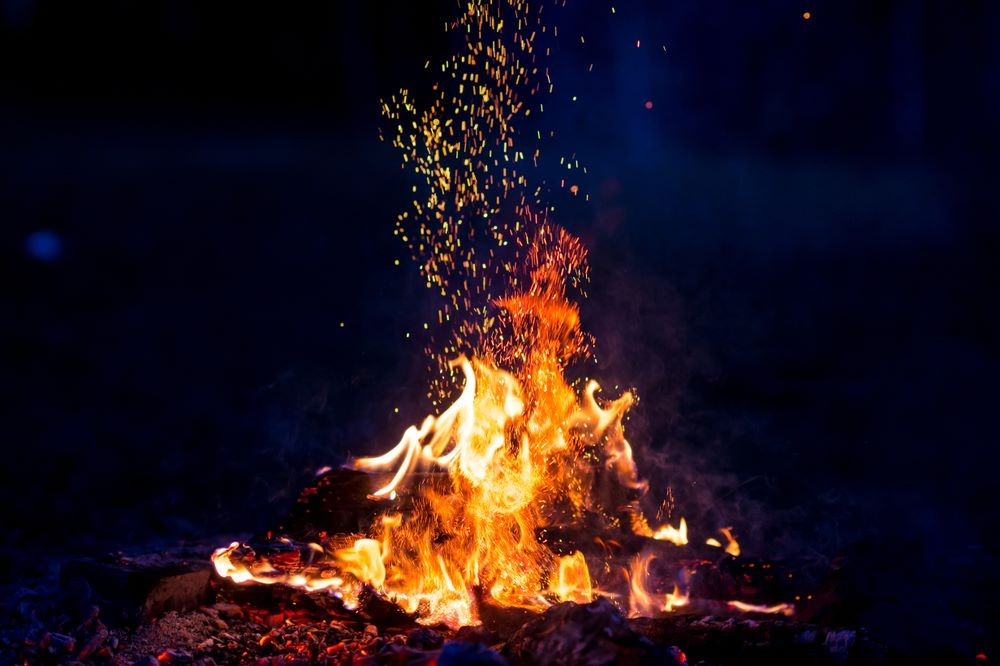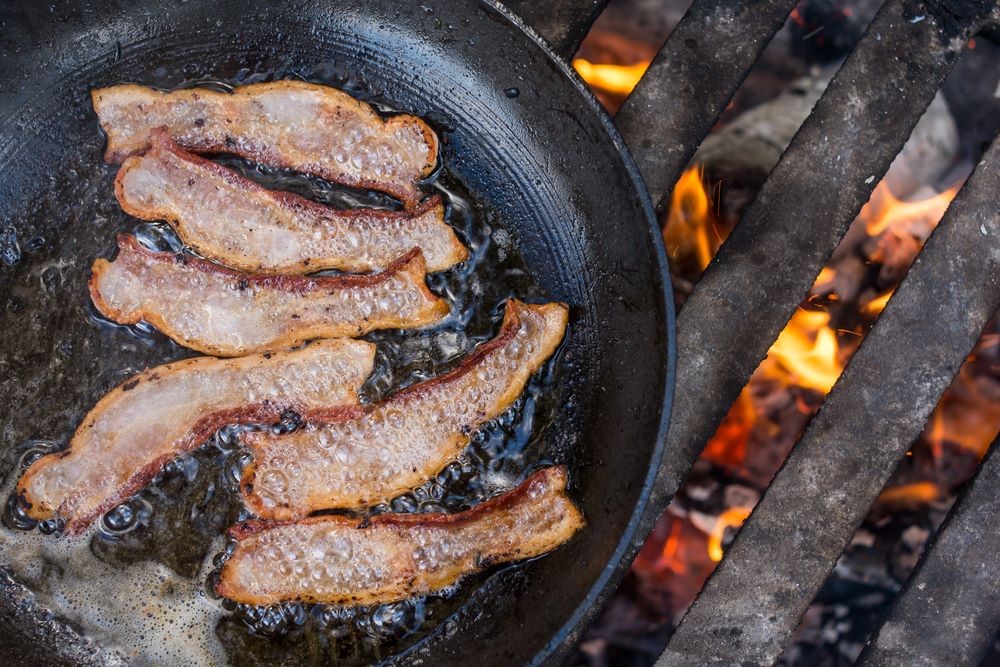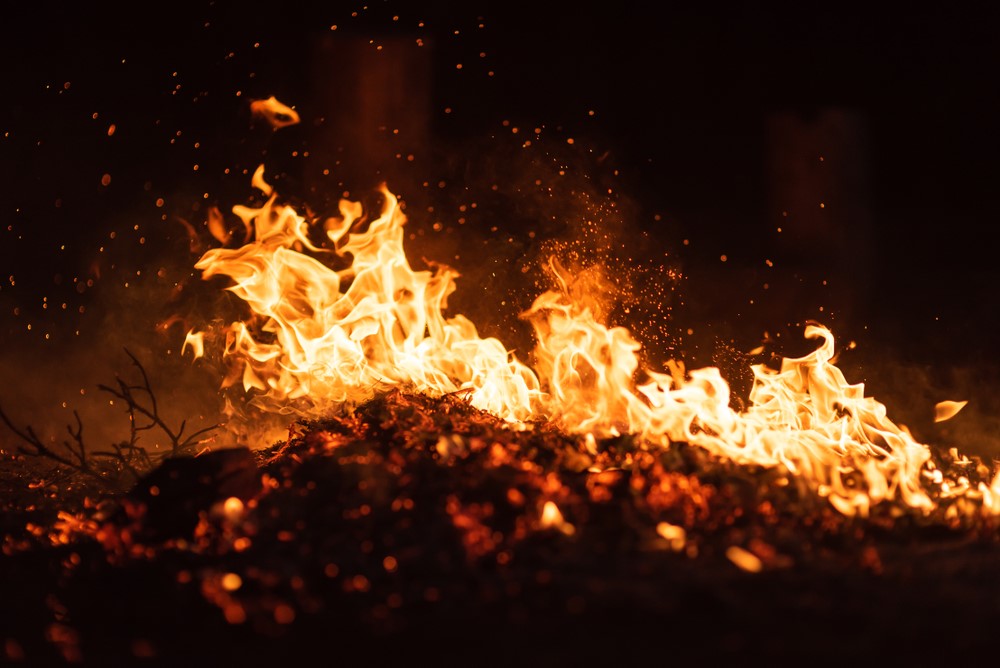Have you ever wondered about campfires? It is a constant camping companion that is used for many things, but have you ever been curious enough to ask, how hot does a campfire get?
My family and I went camping about two weeks ago, and as part of our routine, my husband set up a pit to build a campfire. Later that night, we gathered around to eat s’mores then suddenly, one of my sons asked me that question.
I looked at him with a puzzled expression on my face and could only answer with the general response of: “Really hot, so don’t get too close!”
When we got home, I was so curious that I decided to search for the answer so that I can give him a better answer the next time it comes up.
The Quick Answer
Campfires can reach an average temperature of about 930°F (498.9°C), but this varies depending on the size of the fire.
Medium sized fires can reach 1,112°F, while large fires (as big as those huge bonfires that you see on TV during beach parties) can reach up to 2,012°F.
Hot Enough To Melt What?!
Temperatures of 930°F to 2,000°F+ are no joke!

A campfire that is 930°F can melt lead and tin. This is why it isn’t always a good idea to place tin cans directly over a campfire because if the fire is hot enough, it will start to melt the can.
If the fire reaches 1,000°F – 1,500°F, it can melt aluminum and bronze (which is a mixture of copper and tin).
Stepping it up a notch, if the fire goes over 1,500°F, it can melt copper, silver, gold, and brass(a mixture of copper and zinc).
History Of The Campfire
There has been evidence found that early transitional humans built campfires over 1.9 million years ago.
Evidence for the oldest controlled fire was found in the Wonderwerk Kave in the Kalahari Desert where researchers conducted a microscopic analysis of plant ash and charred bones.
Investigation of the data showed that the materials were not heated above 1,300°F, which was consistent with their early findings of fires that were made using grass, brush, and leaves – all of which don’t produce hot flames.
This data suggests that early transitional humans were able to control fire in order to cook their prey, dating as far back as the first appearance of Homo erectus, over 1.9 million years ago.
Starting A Fire
There are three basic things you need to start a fire: tinder, kindling, and fuelwood.
Tinder is small pieces of flammable material that can ignite easily and are thinner than your pinky finger. These can be flammable materials such as wood shreds or paper.
Kindling is a bit larger than tinder but smaller than fuel wood. Kindling can be small sticks and twigs.
Finally, fuelwood or timber can be small logs that are three inches long or large logs that are meant to burn for hours.
Typically, you need to burn your tinder underneath your kindling, and as the fire grows bigger, you can slowly add your fuelwood.
Campfire Temperature For Cooking

Campfires are used for many things – a source of light, keeping campers warm, to help dry clothes, as beacons for emergencies, repellent for insects, and deterrents of predators.
Although, one of the main reasons people start a campfire is to use it for cooking.While bringing a thermometer just to gauge the temperature of a campfire may be a hassle, you can actually do it by carefully placing your palm over the fire at cooking height, and then counting.
How many seconds you can hold it in that position will be an indicator of how hot the temperature of the fire is.
If you can hold it for 8 seconds, the fire is around 570°F. If you can hold it for 4 to 5 seconds, the fire is about 650°F – 750°F.
You can also use this general estimation:
- 6 – 8 seconds ~ Low
- 4 – 5 seconds ~ Medium
- 3 seconds ~ Medium-high
- 2 seconds ~ High
Fire Safety
Did you know that one second contact with wood that is 158°F can cause third-degree burns? Yikes. So remember to keep safe when around campfires.
Campfires should be set up in a fire ring. If there is none available, construct one. Avoid building your campfire around hanging branches and steep slopes. Keep it on clear and flat ground.
Make sure to clear a large area around your fire of dry leaves and other flammable material at a minimum distance of 10 feet. This includes you and your tent – don’t sleep too close to the campfire and watch your children carefully.
Never leave your campfire unattended because sparks can suddenly fly and cause forest fires. Have lots of water and a shovel nearby to extinguish and/or smother an out-of-control fire using dirt.
The best thing is to keep the fire at a minimum controllable size to prevent problems from occurring. Also, try not to build a campfire if the conditions are too windy.
When it’s time to extinguish a campfire, use lots of water and smother it with dirt. Then stir the mixture and add more water. Ensure that you thoroughly check that there are no burning embers left.
TIP: Put a green leaf above your coals. If the leaf curls up, the coals are still too hot, and you need to smother it more with dirt or water.
Conclusion
Campfires are great, and they are a key part on any camping trip. Just remember to always keep it at a controllable size, so it doesn’t get too hot and out of control.
After doing my research, I now know what to tell my son if he asks me again, and now, if anyone asks, you can answer too.
If you have any questions or comments, feel free to drop them below. If you enjoyed this article, share it with your friends so they also know how hot a campfire can get!

